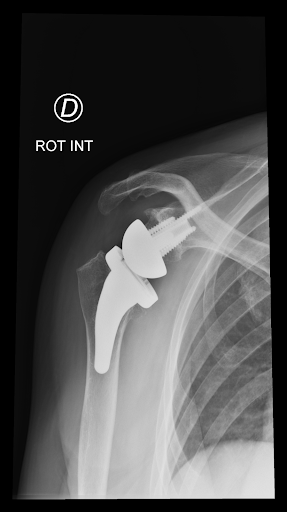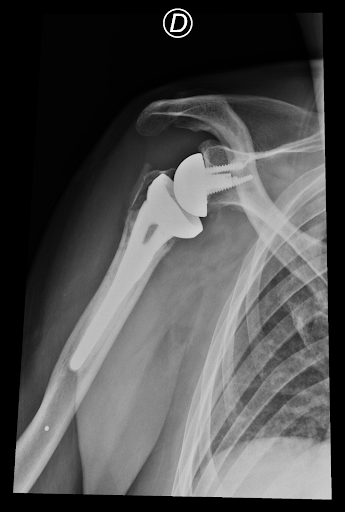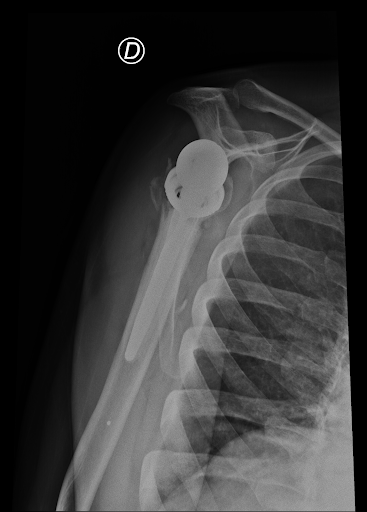Shoulder rosthesis
What is it?
What is it?
- A prosthesis is generally made up of a metal and polyethylene component and is used to replace a diseased joint surface, thereby restoring the mobility and biomechanics of a given joint.
When is it used?
When is it used?
- Fractures
- Prosthesis revisions or fracture sequelae
- Shoulder osteoarthritis with intact rotator cuff
- Shoulder osteoarthritis related to chronic rotator cuff tear
What types of shoulder prostheses are there?
What types of shoulder prostheses are there?
There is already a wide range of prostheses available for the shoulder that can be used depending on the specific pathology of each patient.
- Anatomical Shoulder Prostheses
- Inverted Shoulder Prostheses

- Fracture Prosthetics

- Revision Prostheses

How do you choose between an inverted or anatomical prosthesis?
How do you choose between an inverted or anatomical prosthesis?
- The decision between an inverted or anatomical prosthesis should be made based on clinical and radiological findings. In general, the Anatomical Shoulder Prosthesis was designed to treat patients with shoulder osteoarthritis in which the rotator cuff remains intact and the osteoarthritis is predominantly between the humeral head and the glenoid cavity.
On the other hand, the Inverted Shoulder Prosthesis was developed to treat patients with chronic rotator cuff tears . The rotator cuff is a stabilizing structure of the shoulder that keeps the humeral head centered on the glenoid during the various movements performed by the shoulder.
In chronic rotator cuff tears, the stabilizing function is progressively lost, leading to the gradual elevation of the humeral head. This micro-instability, in the long term, leads to the development of shoulder osteoarthritis which, in this case, may involve not only the humeral head with the glenoid cavity, but also the humeral head with the lower surface of the acromion.
It is called Inverted Shoulder Prosthesis because the spherical surface of the prosthesis is placed on the glenoid side of the scapula and not on the humeral side, “inverting” the position of the semi-sphere. This inversion of the position of the sphere allows the stability lost due to the absence of the rotator cuff to be restored and allows the lost shoulder function to be recovered. - Shoulder osteoarthritis related to chronic rotator cuff tear is by far the most common, which is why, currently, the Reverse Shoulder Prosthesis is the most frequently performed prosthesis worldwide.
- The decision between an inverted or anatomical prosthesis should be made based on clinical and radiological findings. In general, the Anatomical Shoulder Prosthesis was designed to treat patients with shoulder osteoarthritis in which the rotator cuff remains intact and the osteoarthritis is predominantly between the humeral head and the glenoid cavity.
How long do I have to stay in hospital?
How long do I have to stay in hospital?
- This procedure can be performed on an outpatient basis, meaning the patient can be discharged on the day of surgery or the day after the procedure, spending only one night in the hospital. The decision must be made on an individual basis.